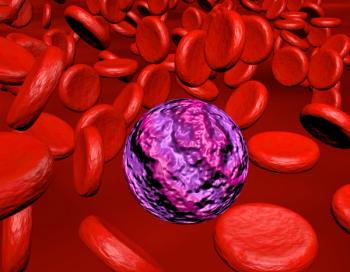
- ONCOLOGY Vol 9 No 4
- Volume 9
- Issue 4
Study Identifies Clinical Factors That Predict Outcome in Aggressive Non-Hodgkin's Lymphoma
Today, we can cure a significant portion of people with aggressive non-Hodgkin's lymphomas. The cure rate at 5 years for all patients with advanced diffuse large-cell lymphoma is approximately 35%.
Today, we can cure a significant portion of people with aggressivenon-Hodgkin's lymphomas. The cure rate at 5 years for all patientswith advanced diffuse large-cell lymphoma is approximately 35%.Patients with localized disease are cured the majority of thetime. However, it is important to be able to predict an individualpatient's chance for benefit.
In her talk at the Pan Pacific Lymphoma Conference, Dr. MargaretShipp of Dana-Farber Cancer Center described an internationalstudy involving several thousand patients with aggressive non-Hodgkin'slymphoma that established the International Prognostic Index.The patients were treated in the 1980s with active combinationchemotherapy regimens.
This study identified five factors that strongly predicted outcome:Ann Arbor stage, age, serum LDH level, performance status, andnumber of extranodal sites of involvement. When only young patientswere considered, Ann Arbor stage, serum LDH level, and performancestatus were the major prognostic factors.
By adding together the adverse factors present in an individualpatient, it is possible to predict the patient's chances of survivalwhen treated with standard anthracycline-containing combinationchemotherapy regimens. Patients with a very good outlook shouldprobably receive current standard therapies, and future studiesin these patients might be aimed at efforts to reduce toxicity.However, we need new treatments for those who have a very pooroutlook.
It is important to understand why these clinical factors predictoutcome. It must be that they are indirect representations ofadverse characteristics of the tumor. For example, such factorsas tumor proliferative rate, mass size, and serum LDH level mightreflect abnormalities in tumor growth and invasive potential.Such abnormalities as B symptoms and performance status mightbe reflections of the patient's ability to respond to the tumor.Finally, factors such as the patient's age might be a reflectionof the patient's ability to tolerate therapy.
The International Prognostic Index has recently been demonstratedto work fairly well for patients with low-grade non-Hodgkin'slymphomas, and it is likely that it might be used in planningclinical trials in these tumors as well as in the aggressive non-Hodgkin'slymphomas.
Articles in this issue
over 30 years ago
Ganciclovir Implant Prevents Progression of CMV Retinitisover 30 years ago
Old Breast Cancer Treatments May Lead to Lung Cancerover 30 years ago
Probable New Herpesvirus Linked to Kaposi's Sarcomaover 30 years ago
Trials to Study Race and Prostate Cancerover 30 years ago
Pre-antibiotic Treatments Spur Modern Fungal Infection Researchover 30 years ago
Bacterial Vaginosis Linked to Cervical Intraepithelial NeoplasiaNewsletter
Stay up to date on recent advances in the multidisciplinary approach to cancer.


















































































